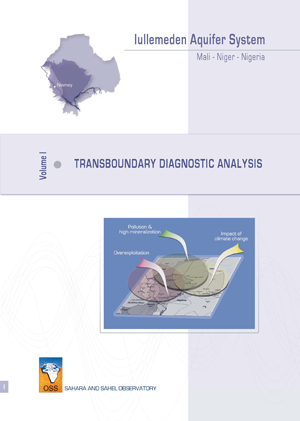Author: OSS
Published in: 2011
Project:
Theme: Water resources management
Type: Studies and reports
ISBN: 978-9973-856-51-7
Country:
Iullemeden Aquifer System: Transboundary diagnostic analysis - Volume I
The Transboundary Diagnostic Analysis approach, advocated by the GEF for International Waters, was applied to the water resources of the Iullemeden Aquifer System. It is a first on the African continent.
It is an objective assessment of scientific and technical facts based mainly on using the best information available and checked. It is made of trans-sectional manner, focusing on transboundary issues without ignoring national concerns and priorities. The TDA is used to determine the relative importance of the sources, causes and impacts on transboundary issues in water. Its objectives are:
- To identify, to quantify and to set priorities for environmental problems that are transboundary in nature;
- To identify their immediate, underlying and root causes.
The main steps of the TDA are:
- the analysis of impacts and consequences of each transboundary issue,
- the final prioritization of transboundary issues,
- the causal chain analysis and governance analysis,
- the production and the adoption of the full document of the ADT by the Steering Committee.
Through TDA, three major transboundary risks have been identified: (a) the decrease of the water resource, (b) the degradation of water quality, and (c) the impacts of climate variability / change. This activity obviously required the development of a database of more than 17 200 water points, a Geographic Information System and a mathematical model. This mathematical model, among others, highlighted the overexploitation since 1995 and an interconnection between the Niger River and groundwater.
In the interest of good governance of this common strategic resource, countries have adopted a Memorandum of Understanding to establish a legal and consultative framework for joint management and for rational and equitable exploitation.
